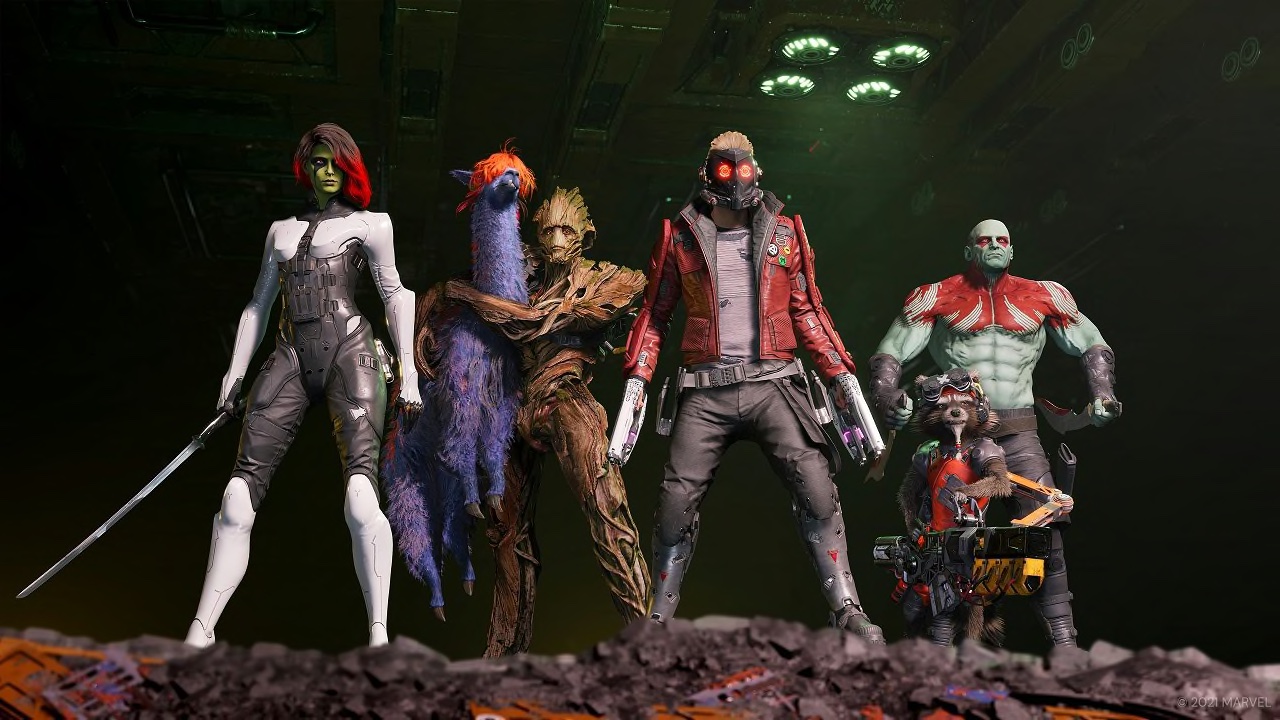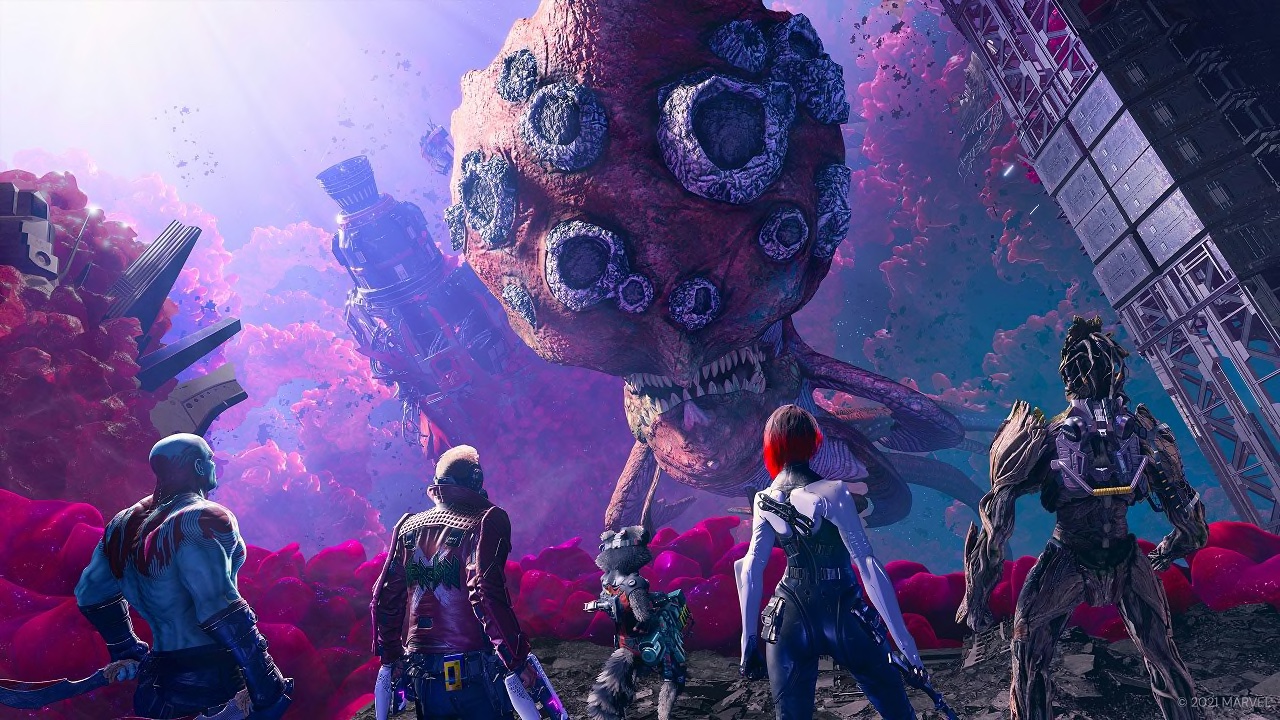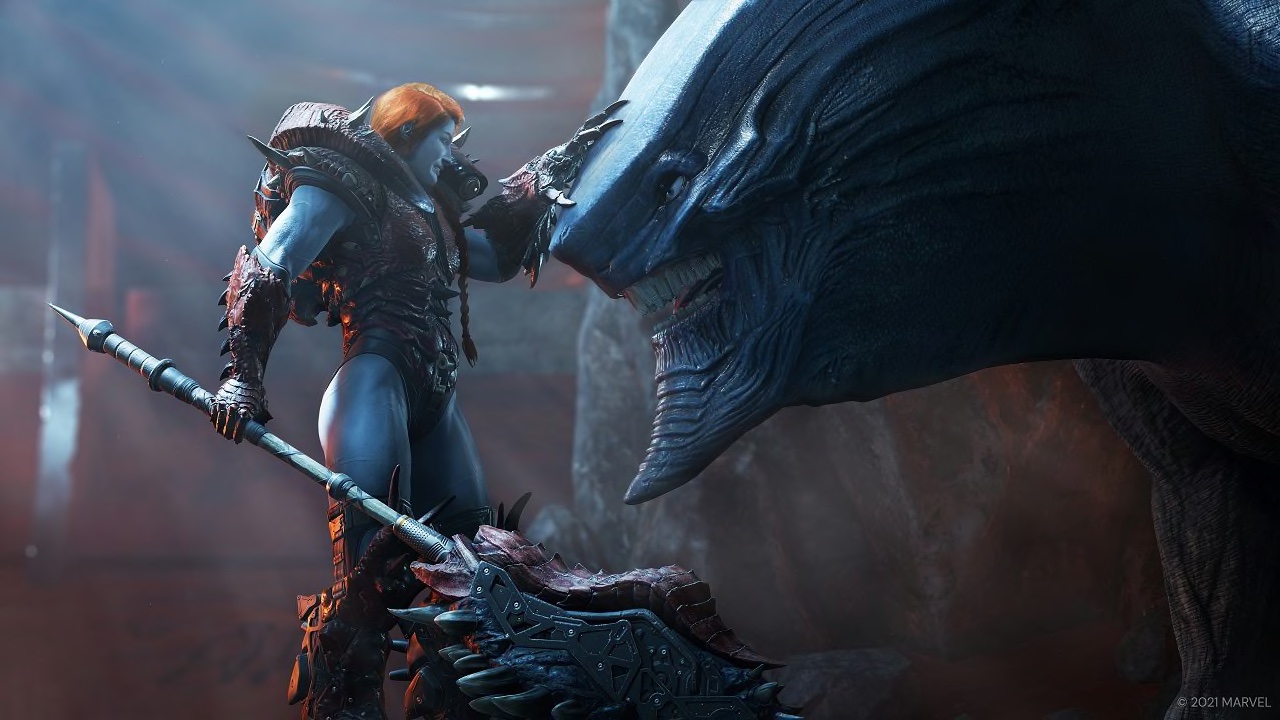And an ominous cloud, at that.
Welcome to your mom’s basement (aka your room with all your cool stuff). I bet you thought you would get to start out flying the Milano. Not so fast, Star Lord.
In Marvel’s Guardians of the Galaxy: Cloud Version, you get to start as a younger Peter Quill, hanging out in your basement bedroom. Enjoy the flashback; you get to see your mom again, so happy points there. I wasn’t expecting it, but I actually liked that we get to see a bit of Peter’s memories of his time on Earth. Of course, he’s just lounging around listening to music, but the backstory exposure helps make this game good.
Don’t worry, you get all the expected elements of GoG: Quill with his visor, staple guns, and rocket boost boots, Gamora with her ability to kill just about anyone/anything, Drax pummeling enemies into paste, Groot’s “I am Groot” (and all that implies…), and Rocket making merry mayhem. We’ll be talking mostly about Quill because that’s who you play in Marvel’s Guardians of the Galaxy. By the way, don’t be too disappointed with appearances; the characters in this game only look close to what you see in the movies. This Quill is blonde, Gamora has short hair, Drax’s tattoos are a bit different, and Rocket has a silly goatee with a bead in it (maybe he’s channeling his inner Jack Sparrow). Groot is pretty close, but he was computer-generated anyway. Appearances aside, the overall look of the game is actually very good.
The soundtrack is even better; the developers used a fun selection of ‘80s music, the likes of which you would expect Quill to have in his collection.
Let’s get into the gameplay, which requires heavy activity on the controller. There is plenty to do, so you will need all of the buttons for something. The game does offer control configuration, so there is some flexibility, but it may take a couple of passes at different tasks to get comfortable with input. It’s not overwhelming, just detailed. As you go about your missions, you can access Quill’s visor to get an enhanced view of the stuff around you. Focusing on something specific and using ZR will give you a text readout with details. Some items get a generic description, but other items will get some helpful information and an indication that you can collect the object for later use. As you gain experience in the game, you can unlock the “elemental” attacks with Quill’s weapons: lightning, ice, plasma, and wind. No, I’m not going to drop any wind jokes. Rocket might, but he’s a bit in your face like that.
You aren’t the only one who gets special attacks; the other team members get to do some interesting things. As you move through Marvel’s Guardians of the Galaxy, there are places where you can choose your dialogue. This can move character development in subtle directions and, during combat, can provide huddle sessions where you can get some buffs for your team’s performance. During combat, you can slow things down to take advantage of some of the fun aspects of the Guardians’ abilities, like Rocket and his grenades (always fun, that one). Some of the ability combos can be really devastating, but there isn’t a lot of growth in this area. Once you get your skill sets, they remain pretty much the same for the rest of the game. No biggie, but it leaves a potential path for advancement out of the mix.
As you explore the game world, there is plenty to see and do, including a lot of nasties to shoot and bad-guys to foil. Don’t be too lax about it, though; while there are three difficulty presets, the “normal” level is not just a walk in the park. There are plenty of ways to die and things that want to kill you, so be alert (the world needs more lerts).
Aaaaanyway, there is more to Marvel’s Guardians of the Galaxy than just flashy graphics and a killer soundtrack. I’ll give some props to the overall dialogue and voice acting work in this game. The characters’ banter is often the sort of caustic humor we came to expect with the films. The voice actors do a great job with the delivery, as well. This can be a sticking point for me; a game which looks great but has flat dialogue or bland delivery can really wreck the experience, but this game scores well on both points.
Now that we’re done with the happy time portion of the review, it’s time to address the less than stellar underbelly of this beast. If this game has an Achilles’ heel, it’s cloud connectivity. This is the central feature of the game, as no huge block of Switch memory needed to load and play. However, it comes with some significant drawbacks. The first is having to rely on a stable wireless connection to play in the first place. If there is any problem with your internet connection, forget playing this game to wile away some time. Also, if the connection isn’t running at full speed, you can get some latency issues, including some jumpy frame rates and a disconnect in the image/audio synchronization. The game takes a while to load, and some of the transitions can take some extra time while the game communicates with the cloud. If all is going well, there is no problem. But if there are any hiccups with the connection, it can really ruin the game experience.
If there is another platform on which you can play this game—one that doesn’t require being connected to the cloud—do that. As it stands for play on the Nintendo Switch, it’s still worth playing, but it may come with a few frustrations you didn’t bargain for.
Review: Marvel’s Guardians of the Galaxy: Cloud Version (Nintendo Switch)
Good
Marvel’s Guardians of the Galaxy is a great game. I would like to give it top marks, but in spite of all the good design elements, cool soundtrack, and very good dialogue and voice acting, the Switch’s cloud version connection issues are a problem I can’t just overlook.






